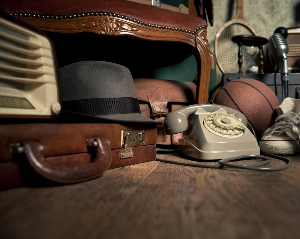From Flutes to Furs: Preparing Your Fragile Items for Storage
Whether you are moving, are travelling, or just don’t have enough space, a storage unit can be a lifesaver. Even some of your most expensive, fragile items can hold up well in a storage unit as long as you follow the right procedures to prepare them.

Here’s what you can do to protect some of your most delicate items for their time in storage.
Musical Instruments
An instrument is a musician’s lifeblood, not to mention his or her pride and joy. Follow these steps to prepare your beloved instrument for storage:
- Clean your instrument and its case so it’s in optimum condition for storage.
- If your case is worn or frayed, place a layer of acid-free paper inside to protect your instrument.
- Store your instrument in its case and above the floor of the storage unit.
For larger instruments such as pianos and drum sets, you can cover the instruments with a protective sheet.
Fine Clothing
What if you need to store luxurious clothing such as a fur coat or a wedding dress? Just follow these steps:
- Clean the clothing to prevent stains from worsening over time.
- Wrap the clothing in acid-free tissue paper. This will prevent any chemicals from leaking off the box into your clothing. If you’re storing a wedding dress, place a piece of acid-free tissue paper between each fold of the dress.
- Place the clothing in a plastic container (cardboard is susceptible to damage from water and animals).
To add extra protection to your wedding dress, wrap the wedding dress in an unbleached muslin cloth. To further protect your fur coat, place it in a cloth bag. Avoid plastic and moth balls, which can dry out your clothing.
Documents
You may need to store sensitive documents like birth certificates, diplomas, or tax documents. A few steps can help you protect these documents:
- Scan the documents and save them to your computer or flash drive.
- Place the documents in a fireproof, waterproof container with a lock.
- Store the container on a shelf above the floor.
It’s important to choose a climate-controlled storage unit, or else your documents could become damp, yellow, or moldy.
Vehicles
Many storage facilities offer space for cars, boats, motorcycles, and other vehicles. You can keep your vehicle in good condition with these steps:
- Fill the gas tank to prevent moisture from building up in the tank.
- Change the oil to prevent oil contaminants from damaging the engine.
- Inflate your tires to prevent them from developing flat areas.
- Place a tire stopper on your tires to keep the vehicle in place.
An interior storage site is your best bet to prevent damage from rain, wind, and dirt. If you store your car outside, cover it with a weatherproof cover.
Fragile Dinnerware
Storing your fragile china and other dinnerware can be nerve-racking. Take these steps to prevent chips and cracks in your dinnerware:
- Wrap each piece in butcher paper or bubble wrap.
- Place the dinnerware in a box with cardboard dividers—that way, each piece gets its own section.
- Set the bowls and plates on their sides. If they fall, they’ll have less pressure on them, so they’ll be less likely to break.
Which type of storage container should you use? Plastic bins are a better choice than cardboard boxes because they are better at resisting water damage.
Furniture
Furniture can stay in good condition for months in storage if you prepare it correctly:
- Clean your furniture. Make sure it’s dry before you place it in storage.
- Cover each piece with a cloth or blanket. Don’t use a plastic cover because doing so can cause condensation.
- Stack furniture above the storage unit’s floor if possible to protect the furniture from water damage.
- Leave space in between each furniture piece to prevent your furniture from getting scratched.
Keep in mind that disassembling your furniture can make it easier to store. You could remove legs from chairs and tables, drawers from dressers and desks, and cushions from couches.
Computers
In order to store your computer, you’ll need to make sure each individual component is safely protected. To prepare your computer for storage:
- Back up your data and remove all external devices (including CDs and DVDs).
- Shut down and unplug the computer.
- Cover each component with a cotton or canvas cover.
- To prevent breakage, attach bubble wrap or foam to screens and monitors.
- Place components in their original packaging, if possible.
To prevent overheating, do not plug in your computer while it’s in storage.
No matter which items you’re storing, choosing the right storage facility is crucial. An indoor, temperature-controlled unit is your best bet because it will protect your items from extreme heat or cold.
If you need a storage unit in the Twin Cities area, count on North Star Mini Storage. We’ll keep your fragile belongings safe for as long as you need.



